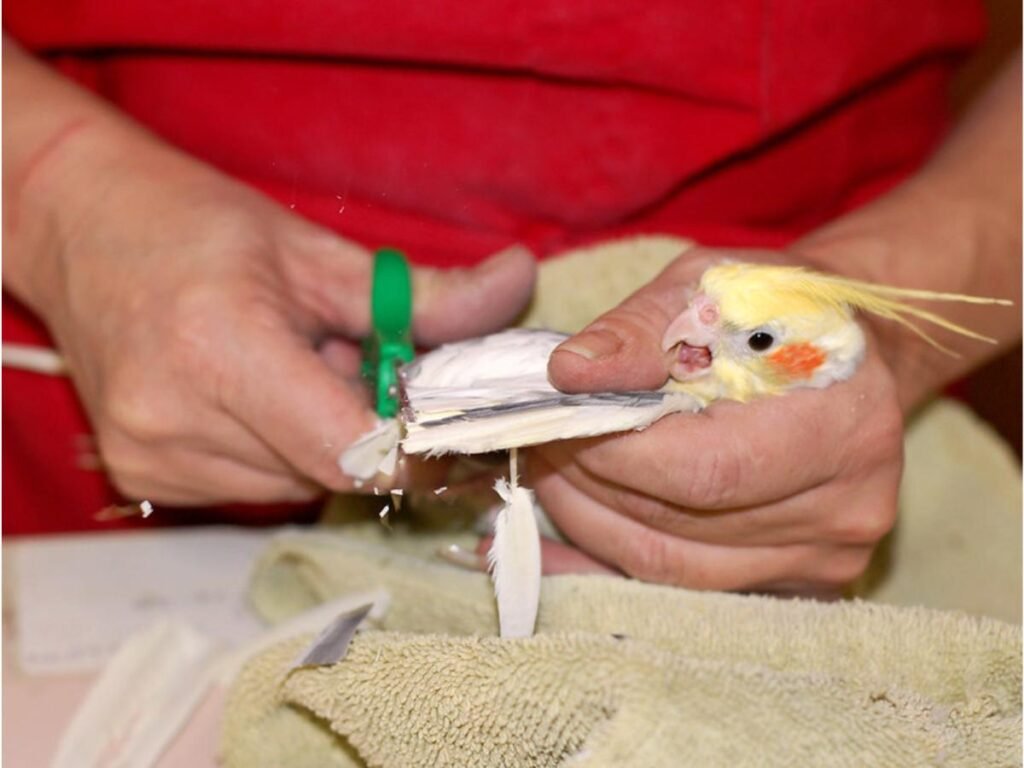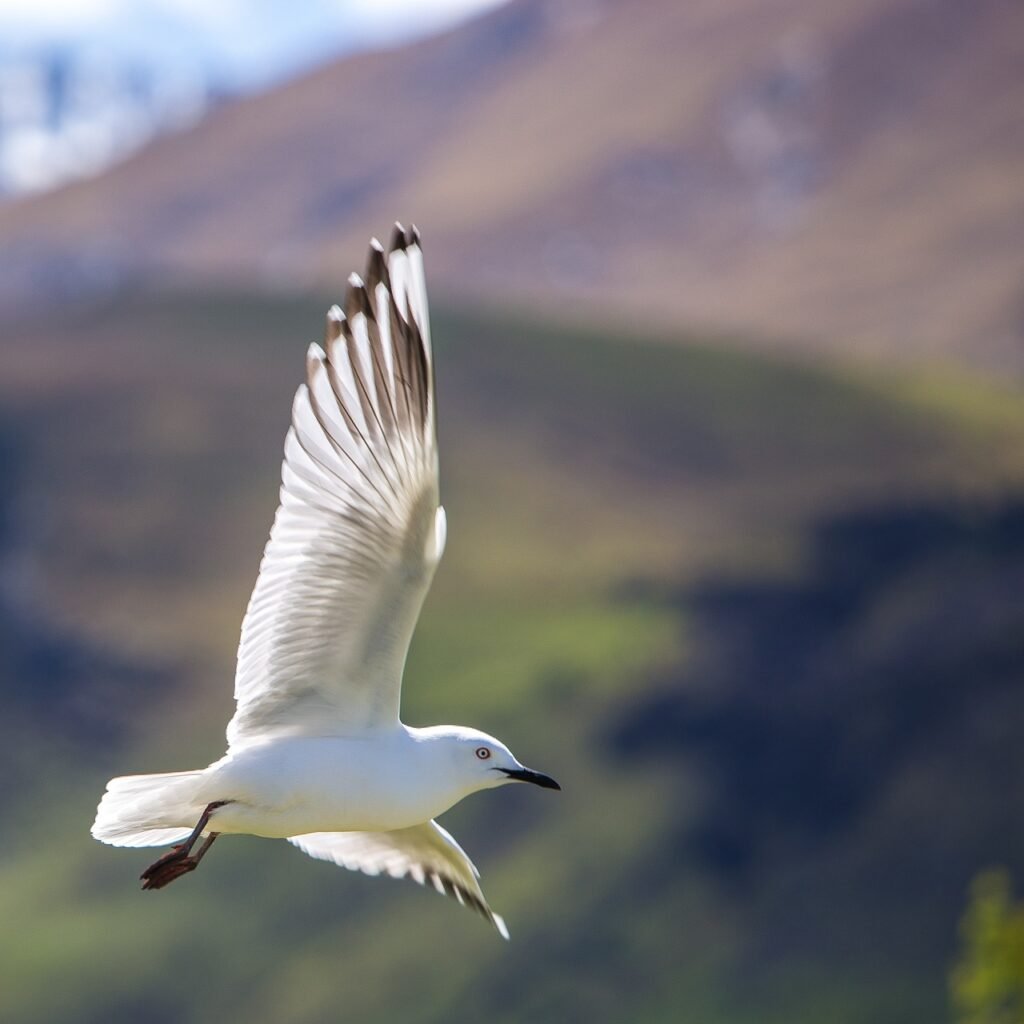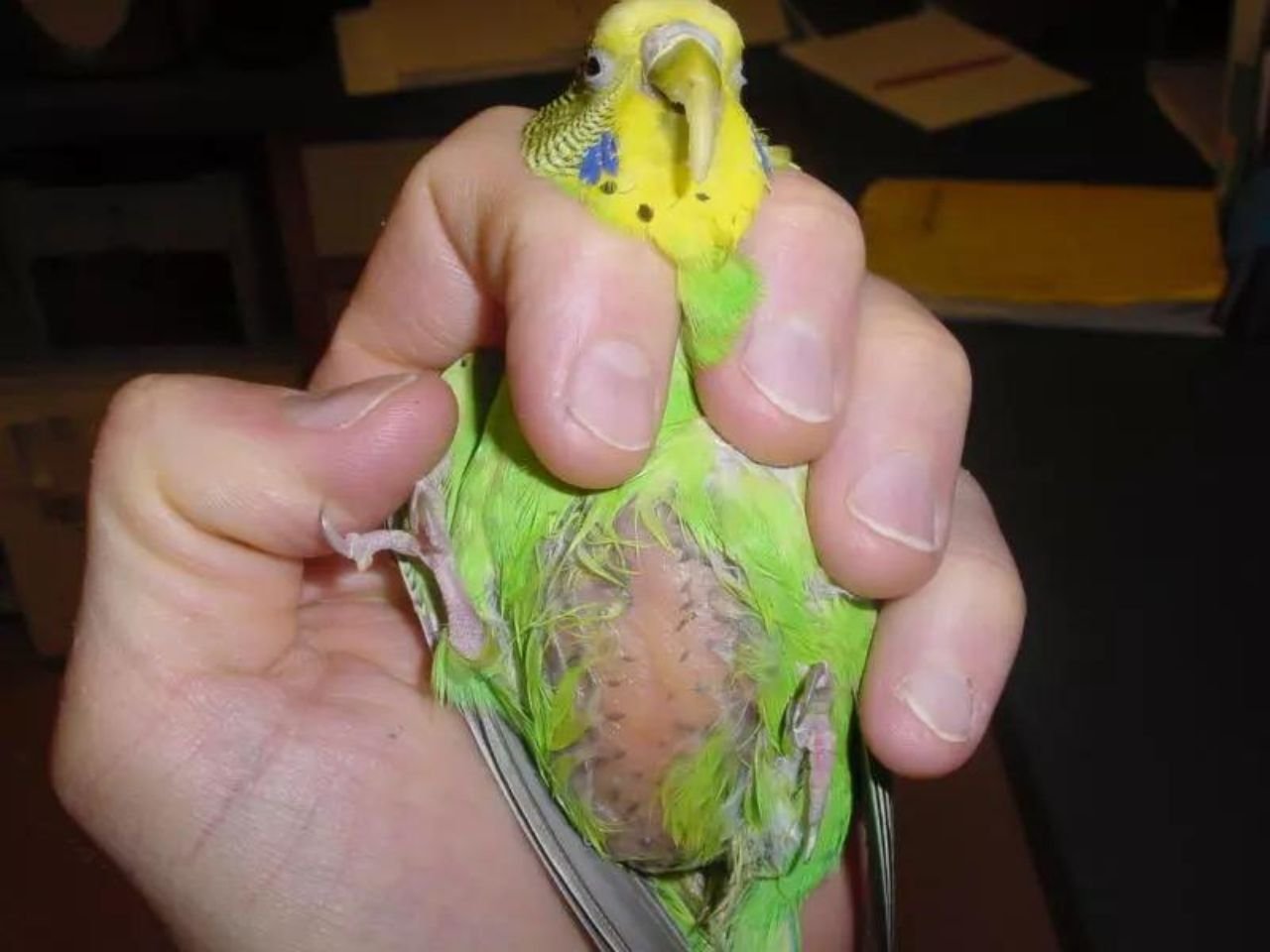Birds may initially exhibit confusion and reduced mobility after wing clipping. They adapt over time, regaining confidence and mobility.
Wing clipping is a common practice among bird owners to prevent their pets from flying away. This procedure involves trimming the primary flight feathers to limit flight capability. Wing clipping does not harm the bird if done correctly. The bird may show signs of confusion and reduced mobility initially.

Over time, most birds adapt and regain confidence. They often become more reliant on their owners for transportation. This can strengthen the bond between the bird and its owner. Clipping wings also makes it easier to train and manage pet birds, ensuring their safety in indoor environments.
Introduction To Wing Clipping
Wing clipping is a common practice for bird owners. It involves trimming the bird’s flight feathers. This procedure limits the bird’s ability to fly. This guide explores the history, purpose, and techniques of wing clipping.
History And Purpose Of Wing Clipping
Bird owners have clipped wings for centuries. The primary reason is to prevent birds from flying away. It also helps in training and handling pet birds. Clipping wings makes it easier to manage birds indoors. It ensures birds do not harm themselves by flying into walls or windows.
In ancient times, people clipped wings for different reasons. Some did it for religious rituals. Others did it to keep birds as pets. Today, it is mostly for safety and training. Veterinary experts often recommend it for young birds. This helps them adapt to home environments.
Common Methods And Techniques
There are several methods to clip a bird’s wings. The most common technique is to trim the primary flight feathers. These are the first ten feathers on each wing. Trimming these feathers prevents the bird from getting lift during flight.
- One-Feather-at-a-Time Method: This method involves trimming one feather at a time. It ensures a more balanced and gradual reduction in flight ability.
- Symmetrical Clipping: Here, feathers are clipped symmetrically on both wings. This method maintains the bird’s balance while walking.
- Partial Clipping: In this technique, only a few feathers are trimmed. It allows the bird to fly short distances but prevents long flights.
It is important to use the correct tools for wing clipping. Sharp scissors designed for pet grooming are ideal. It is also crucial to avoid cutting blood feathers. These feathers are still growing and can bleed if cut.
Consulting a veterinarian before clipping is advisable. They can provide guidance on the best method for your bird. They can also demonstrate the correct way to clip wings safely.
Physical Effects On Birds
Wing clipping is a common practice among bird owners. It involves trimming the primary feathers to limit a bird’s ability to fly. While this can help keep birds safe, it also has several physical effects on them. Understanding these effects is crucial for the well-being of your feathered friend.
Changes In Flight And Mobility
Wing clipping directly impacts a bird’s ability to fly. Birds rely on their wings for movement, balance, and escape from danger. Clipping their wings can make them feel vulnerable.
- Reduced flight ability: Birds may struggle to fly or only manage short distances.
- Balance issues: Clipped wings can affect a bird’s balance, making it harder to perch.
- Limited exploration: Birds may become less curious and less likely to explore their surroundings.
Birds use flight for more than just getting from one place to another. It’s also a way for them to exercise. Lack of flight can lead to weight gain and reduced muscle tone.
Potential Health Risks
Wing clipping can lead to several health risks. These risks are not always obvious at first.
| Health Risk | Description |
|---|---|
| Injury | Clipped birds may injure themselves if they fall or try to fly. |
| Stress | Birds that cannot fly may become stressed or anxious. |
| Weight Gain | Less movement can lead to obesity and related health issues. |
Another important aspect is the potential for feather damage. Birds may start plucking their feathers out of frustration. This can lead to bare patches and skin infections.
It’s also essential to monitor your bird for signs of depression. Birds are intelligent creatures. They can become sad if they feel trapped or unable to perform natural behaviors.
Psychological Impacts
Wing clipping can have significant effects on a bird’s mental health. These effects are often seen in their behavior and emotional responses.
Stress And Anxiety Responses
Birds may experience increased stress and anxiety after wing clipping. They feel vulnerable and may become more alert to threats.
Stress signs include:
- Feather plucking
- Loss of appetite
- Excessive vocalization
Birds under stress may also exhibit repetitive behaviors. Pacing and head bobbing are common signs.
Behavioral Changes In Captivity
Wing clipping can lead to behavioral changes in captive birds. They may become more dependent on their caregivers.
Common changes include:
| Behavior | Description |
|---|---|
| Aggression | Birds may bite more often. |
| Withdrawal | They may hide or avoid interaction. |
| Obsession | Birds may become fixated on certain objects or people. |
These changes can affect the bird’s quality of life. Monitoring and providing enrichment can help alleviate these impacts.
Social Dynamics And Interaction
Understanding social dynamics and interaction is crucial when observing birds after wing clipping. Birds rely heavily on their wings for various activities. These include flying, mating, and communicating. Clipping their wings can disrupt their natural behavior. This affects their social interactions within the flock.
Altered Flock Behaviors
Wing clipping can lead to altered flock behaviors. Birds often use flight to establish their place in the social hierarchy. Clipped wings prevent this, causing shifts in dominance.
A bird unable to fly might face exclusion. Flocks often avoid birds that can’t keep up. This can lead to isolation for the clipped bird.
Here are some observed changes in flock behavior:
- Reduced playfulness: Birds may play less without full flight capabilities.
- Increased aggression: Dominant birds might bully the clipped bird.
- Changed feeding patterns: Clipped birds may have trouble accessing food.
Effect On Mating And Communication
Wing clipping also impacts mating and communication. Birds use flight displays to attract mates. A clipped bird can’t perform these displays. This can result in fewer mating opportunities.
Communication is another area affected by wing clipping. Birds often use flights to signal warnings or find each other. Clipped birds might struggle to keep up. This can lead to miscommunication within the flock.
| Aspect | Impact of Wing Clipping |
|---|---|
| Mating Displays | Reduced effectiveness due to inability to perform aerial displays. |
| Communication | Possible misunderstandings due to limited flight. |
| Social Bonding | Weakened as the bird may be isolated. |
Understanding these effects can help bird owners make informed decisions. They can better manage their bird’s social dynamics and interaction. This ensures the bird’s well-being and happiness.
Adaptation And Compensatory Behaviors
Birds are resilient creatures. After wing clipping, they often show amazing adaptation and compensatory behaviors. This change can be challenging for them. Yet, they usually find new ways to adjust and thrive.
Learning New Skills
After wing clipping, many birds learn new skills. They may find different ways to move around. Some birds hop more. Others may climb using their beaks and feet. Learning these new skills helps them stay active.
Birds also become more clever. They might figure out new routes to their favorite spots. They may also use toys and perches in new ways. This helps them stay engaged and happy.
| Behavior | Explanation |
|---|---|
| Hopping | Birds may hop to move around their environment. |
| Climbing | Using beaks and feet to climb to higher places. |
| Using Toys | Finding new ways to play with toys and perches. |
Dependency On Humans
Wing-clipped birds often become more dependent on humans. They may seek help to reach higher places. They might also look for more interaction and playtime. This increased dependency can strengthen bonds between birds and their owners.
Owners should be aware of their bird’s needs. Providing climbing toys, perches, and regular playtime is important. This helps birds feel secure and happy.
- More Interaction: Birds may need more attention and playtime.
- Helping Reach Higher Places: Owners might need to assist birds more.
- Providing Climbing Toys: Giving birds tools to exercise and explore.
Understanding these behaviors helps in caring for wing-clipped birds. This ensures they lead a fulfilling and happy life.
Welfare Considerations
Understanding the welfare considerations of bird behavior after wing clipping is crucial. Wing clipping involves trimming a bird’s flight feathers to prevent full flight. This practice has significant implications for a bird’s physical and psychological well-being. Let’s explore these aspects in detail.
Ethical Concerns
Wing clipping raises several ethical concerns. Birds are natural fliers, and clipping restricts this ability. It’s essential to consider whether this practice aligns with animal welfare principles.
- Natural Behavior Disruption: Birds rely on flying for many natural behaviors.
- Stress and Anxiety: Limiting flight can cause stress and anxiety in birds.
- Physical Health Impact: Clipped wings may lead to muscle atrophy and obesity.
Improving Quality Of Life Post-clipping
Ensuring a bird’s well-being after wing clipping involves several steps. Environmental enrichment and proper care are key factors.
| Action | Benefit |
|---|---|
| Provide Climbing Structures | Encourages physical activity and muscle use. |
| Interactive Toys | Stimulates mental engagement and reduces boredom. |
| Social Interaction | Reduces loneliness and promotes mental health. |
Here is a simple list of additional steps to improve a bird’s quality of life post-clipping:
- Offer a balanced diet to maintain health and vitality.
- Ensure regular vet check-ups to monitor physical condition.
- Create a safe environment to prevent accidents and injuries.
By considering these welfare aspects, bird owners can help their pets live a fulfilling life even after wing clipping.
Alternatives To Wing Clipping
Wing clipping in birds can be controversial. Many bird owners seek alternatives to this practice. Clipping wings limits a bird’s flight and can impact their behavior and mental health. Understanding alternatives provides a humane way to manage birds while respecting their natural instincts.
Training And Environmental Enrichment
Training your bird can be an effective alternative to wing clipping. Birds are intelligent and can learn commands and behaviors. Positive reinforcement training helps birds understand boundaries without physical restrictions. Use treats and praise to encourage desired behaviors.
Environmental enrichment keeps birds mentally and physically stimulated. Toys, puzzles, and foraging activities mimic natural behaviors and prevent boredom. A well-stimulated bird is less likely to engage in problematic behaviors.
| Training Techniques | Benefits |
|---|---|
| Clicker Training | Improves behavior |
| Target Training | Enhances mental stimulation |
| Recall Training | Ensures safety |
Safe Aviary Design
A safe aviary design can also be an alternative to wing clipping. A well-designed aviary allows birds to fly freely while keeping them safe. Ensure the aviary is secure and free from hazards.
- Ample space for flight
- Perches at different heights to encourage exercise
- Secure doors and windows to prevent escapes
- Natural elements like branches and plants
Properly designed aviaries provide a safe environment for birds. They enable birds to exercise naturally, which benefits their physical and mental health. Birds can explore and engage in behaviors they would in the wild.
Choosing alternatives to wing clipping can enhance your bird’s quality of life. Consider training and environmental enrichment, and a safe aviary design.
Future Of Avian Care

The care for pet birds has evolved over the years. Wing clipping has been a common practice. But it raises questions about bird behavior and welfare. The future of avian care is bright. New advancements and changing perspectives are shaping a better world for our feathered friends.
Advances In Veterinary Practices
Veterinary science is making great strides in avian care. Modern techniques ensure better health and happier lives for birds.
- Improved Diagnostics: Advanced imaging and blood tests help detect issues early.
- Specialized Treatments: Customized care plans for different bird species.
- Behavioral Therapy: Addressing mental well-being along with physical health.
These advancements mean less stress for birds. They receive the best care possible, enhancing their overall well-being.
Evolving Perspectives On Bird Keeping
The way we keep birds is changing. People are becoming more aware of their needs and natural behaviors.
- Enrichment Activities: Providing toys and activities to keep birds engaged.
- Natural Habitats: Creating environments that mimic their natural homes.
- Flight Freedom: Allowing birds to fly within safe spaces.
These new perspectives improve the quality of life for birds. They can express natural behaviors and live more fulfilling lives.
Table below summarizes the key changes in avian care:
| Aspect | Traditional Approach | Modern Approach |
|---|---|---|
| Wing Clipping | Common Practice | Minimized or Avoided |
| Environment | Basic Cage | Enriched Habitat |
| Health Care | General Checkups | Specialized Treatments |
The future of avian care looks promising. With ongoing advancements and evolving perspectives, our birds can enjoy healthier and happier lives.
FAQ to Bird Behavior After Wing Clipping
Do Birds Recover From Clipped Wings?
Yes, birds can recover from clipped wings. Feathers regrow during molting. Recovery time varies by species and individual health.
What Are The Consequences Of Clipped Wings?
Clipped wings prevent birds from flying, impacting their ability to exercise and escape predators. It can cause stress and behavioral issues.
Can A Bird Still Fly With Clipped Wings?
A bird with clipped wings cannot fly effectively. Clipping reduces flight capability, aiding in safety and control.
Wing clipping impacts bird behavior significantly. Owners should observe changes closely. Understanding these behaviors ensures better care. Adaptation takes time, so be patient. Always prioritize your bird’s well-being. With proper attention, your feathered friend will adjust smoothly. Keep learning and stay informed to provide the best environment for your bird.
Happy bird-watching!







